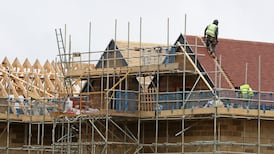Tesla isn't going private after all. In a statement late Friday, Elon Musk, the electric-car maker's chief executive, said he and the company's board had concluded that they would not turn Tesla into a privately owned company.
The move halts a process set in motion by Musk in a Twitter post on August 7th. The reversal is the latest upheaval for the company, which has struggled with production challenges for its first mass-market car, the Model 3.
“I knew the process of going private would be challenging, but it’s clear that it would be even more time-consuming and distracting than initially anticipated,” Musk wrote in a statement that Tesla posted on the company’s blog shortly after 11 pm.
“After considering all these factors, I met with Tesla’s board of directors yesterday and let them know that I believe the better path is for Tesla to remain public,” he said. In a separate statement, six of Tesla’s directors said that at the meeting, Musk “reported on the work he and his advisers have been doing in connection with this effort.”
“Elon communicated to the board that after having done this work and considered all factors, he believes the better path is to no longer pursue a transaction for taking Tesla private,” the directors said in the statement. They also affirmed their support for Musk’s leadership.
"The board and the entire company remain focused on ensuring Tesla's operational success," they said, "and we fully support Elon as he continues to lead the company moving forward." The six directors – James Murdoch, Antonio Gracias, Robyn Denholm, Brad Buss, Ira Ehrenpreis and Linda Johnson Rice – served on a special committee to evaluate the prospect of taking Tesla private. Their statement said the committee had now been dissolved.
Tesla spokesman
A Tesla spokesman declined to comment Friday beyond what Musk and the board members had said in their statements. Musk’s announcement August 7th that he was considering taking the company private so dumbfounded investors that trading was halted pending a fuller statement. Tesla’s stock eventually climbed to about $380 (€327), but it closed Friday at $322.82 (€278)– far short of the $420 (€361) price that Musk said would be paid to those surrendering shares in the transaction.
His initial tweet, made without his alerting his board, said he had "funding secured," but it turned out to be far less certain. What followed was a two-week whirlwind in which Musk faced inquiries by the Securities and Exchange Commission and consternation from his own directors.
Musk went on to explain his thinking in a letter to employees, a blog post and an emotional interview with The New York Times. He expressed frustration with the demands of operating a public company, including the quarterly reports that he said incentivised shorter-term thinking.
But in the blog post Friday, he said that given the feedback he had received, “It’s apparent that most of Tesla’s existing shareholders believe we are better off as a public company.”
Musk is Tesla’s largest single shareholder, owning just under 20 percent of the company. In the Times interview, he told of being physically exhausted and using sleeping pills in the past year while working 100 hours or more a week at times. Directors in recent days have told Musk to curb his Twitter use, according to people familiar with the matter.
The decision to remain publicly owned resolves perhaps the most burning issue for Musk and Tesla, but many others continue to dog them. The company has never reported an annual profit since its founding in 2003. Tesla has been striving to produce at least 5,000 Model 3 sedans a week, the level at which it can turn a profit, according to Musk. It has said it reached that level in recent weeks, although it has taken some extreme measures to do so.
The company has been running its assembly lines around the clock. It has also built a third production line in a gigantic tent outside the walls of its car plant in Fremont, California – a tactic most auto-manufacturing experts have never seen before. – New York Times










